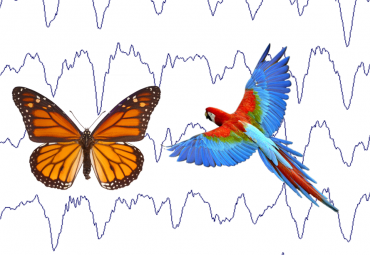Same same but different: Shaping the memory engram through learning overlapping memory events
Abstract
A brief experience of seconds can leave a memory lasting a lifetime. Memories become permanent through a process termed memory consolidation that occurs at a synaptic and at systemic level. However, we know now that consolidation is far from being a terminal state. Instead, these last two decades of scientific research have unveiled that consolidation is a neverending process that makes memories shapeable, malleable and above all reconstructive in nature. In this thesis we study some of the factors that can influence these processes. In particular, we focused in the factors that affect how overlapping memories are consolidated. Learning overlapping information sets the stage for memory dynamics. When new information arrives into the system, the brain automatically reactivates similar stored information so both memories can interact. Such processes can result in the consolidation of independent and similar competitive traces that can interfere with the expression of old memories. In addition, such interaction can result in modifications in the neuronal representation of either the new or old reactivated memories.
Given its clinical relevance, in this thesis we studied the effects of interference on threat related memories after extinction training. This is the basic mechanism underlying exposure therapy to counteract pathologically threatful memories. However, interferent or fear forgetting effects are only transient. In study 1 and 2 we explored two strategies to counteract threatful memories and prevent the recovery of defensive responses. Our results suggest that implicit extinction as well as reconsolidation of threatful memories are two mechanisms that avoid “top-down” inhibitory learning and that prevent the recovery of defensive responses. These two techniques represent potentially effective strategies to weken maladaptive memories and aliviate pathologies like phobias.
If the brain decides to integrate the new memory, then this memory will be transferred into memory networks that share similar features in order to construct relational memory networks. This process is highly regulated primarly during sleep. We studied such processes in studies 3 and 4. In study 3, we were interested in whether the formation of relational memory networks supports the generalizations of emotional values to novel but similar stimuli. We showed that motivational value could be transferred into neutral memories through their semantic similarity benefiting their consolidation. Such memory effects were boosted during sleep. Interestingly, these results hinted the unexpected possibility that sleep consolidation might have an important role in the forgetting of irrelevant information. This potential role of sleep was the focus of study 4.
Relational memory networks are organized networks of overlapping representations that conserve core features of related memories but lose specific details. According to theoretical models, sleep might have an important role in this process by reactivating overlapping memories. In study 4 we explored this possibility and found that sleep reactivates networks of overlapping memories, as opposite of discrete memory traces. Furthermore, sleep reactivation would strengthen or weaken memories as a function of their associative memory strength with the reactivated memory network. These studies were critical to determine a potential role of sleep in active forgetting.
Overall, our studies support the idea that memories are represented by neuronal populations that are widely distributed across different brain systems. We observed that different parts of the memory engram can be shaped in their expression or in their nature through the acquisition of overlapping information. Critically, sleep appears to be a key player for memory consolidation and the stabilization of relational memory networks. This thesis taps into exciting, new and debated topics in the field of memory consolidation. We believe that our studies can provide insight and new perspectives into the processes that govern memory shaping.

